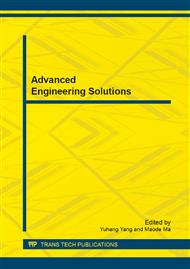p.726
p.731
p.736
p.741
p.747
p.752
p.757
p.762
p.769
Study on Energy-Saving Technology and Design Optimization of Facade in Cold and Severe Cold Area
Abstract:
This article take cold regions of rural residential building envelope as the research object, suitability technical theory as the theoretical basis, we evaluation of rural residential energy envelope because China's rural areas is characterized by large regional differences and to find a solution for the envelope. It could be considered as the useful reference for retrofit design of similar projects.
Info:
Periodical:
Pages:
747-751
Citation:
Online since:
July 2014
Price:
Сopyright:
© 2014 Trans Tech Publications Ltd. All Rights Reserved
Share:
Citation:


